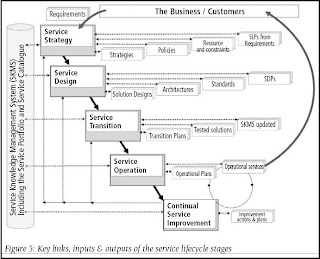 I had this 1-week training that talks about ITIL processes and then let you to take the ITIL exam and be "certified". Well, initially I had an opinion that it was a complete waste of time spending a week in learning a non-technical subject that you do not apply in your day-to-day events. But the impression and the whole perception got changed after sitting in the classroom with 22 other folks (mix of administrators, managers and other infrastructure staff) and getting the essence of what ITIL is all about and how it applies to your business and the job.
I had this 1-week training that talks about ITIL processes and then let you to take the ITIL exam and be "certified". Well, initially I had an opinion that it was a complete waste of time spending a week in learning a non-technical subject that you do not apply in your day-to-day events. But the impression and the whole perception got changed after sitting in the classroom with 22 other folks (mix of administrators, managers and other infrastructure staff) and getting the essence of what ITIL is all about and how it applies to your business and the job.ITIL is IT Infrastructure Library and talks about the entire gamut of IT processes that we need to follow in the IT world. The business customer is always on the top list of priorities and all the process work hand-in-hand to meet or exceed the customer's expections. Its all about one word "SERVICES". Everyone has a defined role and follow a set of rules to help run the show smoothly. We learned that the 5 stages of ITIL (Service Strategy, Service Design, Service Transition, Service Operation and Continual Service Improvement) worked thru a common goal towards customer satisfaction and meet the defined service level agreements.
The thing that came as a surprise to me were the different agreements that are out in the IT service industry. We only talk of Service Level Agreements and that kinda implies all - whether it is internal, with the customer or with outside vendors (suppliers). ITIL classifies an internal agreement (within the different units of the same business) as OLA (Operational Level Agreement) and the agreement with Suppliers (vendors) as UC (Underpinning Contracts). SLA in principal, and according to the general understanding, is between the business and its customer(s).
Further the roles and responsibilites of different groups are clearly defined. The SLM (Service Level Manager) is responsible for negotating and writing up all these different agreements/contracts. However, the Supplier Manager is responsible to ensure that vendors obey the terms and conditions in the UC (and nail them down, if need be). The Change Manager is a separate role than the Configuration Manager. We did a lot of interactive exercises and projects to reinforce the learning and it truly was fun!
There are tons of new terms and abbreviations that one will find out but they all make sense at the end of the course. So far when someone said "DML" word, Data Manipulation Language statement came to mind. ITIL uses DML for Definitive Media Library - an authoratitive and well protected source of Software (including the master copy of a software together with the License, documentation and any kind of agreements etc). Service value is defined in terms of Service Utility and Service Warranty which have different purposes. ITIL talks about KPIs (Key Performance Indicators) and CSFs (Critical Success Factors) to measure services. Then there is this Service Portfolio that covers the planned services (Pipeline), the existing services (the Service Catalog) and the retired services. There are teams with defined roles and responsibilites per ITIL but, in a practical scenario, I see a person wearing different hats if following the ITIL protocol. The Availability Management and Access Management are separate from the IT Service Continuity Management (ITSCM) whereas in most cases (where a business is small with small IT staff), it is pretty much the same that handles the services availibility, the access into the systems (security etc) and any Disaster Recovery (DR) solutions.
ITIL has roots somewhere in Europe and the way I understood is that ITIL is to Infrastructre team as CMMI is to Software Engg. in general.
Don't know how much weight that has on your resume but it certainly was a good experience from learning perspective!!
More info on ITIL is available here --
http://www.itsmf.co.uk/web/FILES/News/itSMF_ITILV3_Intro_Overview%5B1%5D.pdf

